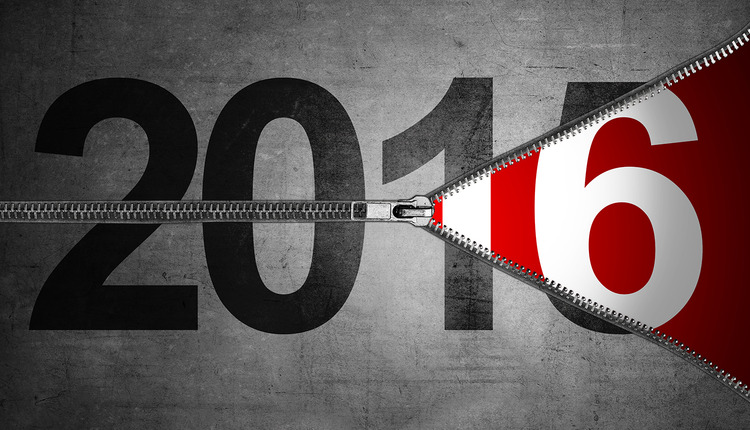If you're like most mailers, the thought of migrating to Full-Service Intelligent Mail is causing a bit of indigestion. USPS introduced Full-Service back in 2009; however, less than 800 mailers are actively sending mail through this program. The Post Office wants more mailers to use Full-Service. USPS uses this data to gain insight into mail handling procedures and fully report on service standards. Mailers are required to use this system to qualify for automation rates in 2014. There's no indication that this date will be pushed back.
Unfortunately, this puts the thousands of mailers who haven't switched in a tough spot. Getting approved for Full-Service is more than just putting a barcode on your mailpiece. The on-boarding steps can take weeks, even months, to complete. USPS received feedback after the initial 2014 requirement proposal and came up with a plan to help. It is critical for mailers to start sending Full-Service mail now.
The Full-Service Process
Automation mailers have already converted over to the basic Intelligent Mail barcode. Full-Service builds on this barcode, and adds even more complexity for mailers:
· With Full-Service, the barcode on the mailpiece must use the Sequence Number field to stay unique for a minimum 45 days.
· In addition to the piece barcode, trays, sacks, and handling units (pallets, APCs, and other large containers) must also have a unique barcode.
· Mailing documentation must be submitted electronically via Mail.dat, Mail.XML, or the Postal Wizard. Users of Mail.dat or Mail.XML must test their submissions through the Test Environment for Mailers (TEM).
· Mailers who drop-ship must schedule using FAST, and mailers with CSAs or other special procedures must follow those agreements.
Working with their BMEU, mailers test at least five jobs prepared using the Full-Service requirements before they are officially approved.
Help with Electronic DocumentationSo far, TEM has been the biggest bottleneck for most mailers. Users of Mail.dat and Mail.XML must go through a manual testing process that is confusing and complex. USPS has introduced a new program where users of approved software products can skip a few steps. This streamlined TEM process is still in testing, but it should be available for mailers very soon.
Postage Credit AheadEven with a streamlined TEM process, the biggest complaint mailers have about Full-Service is the investment required. In some cases there are additional equipment costs. All mailers will need to change their processes, educate their employees, and test their mailings. USPS introduced a Full-Service Tech Credit program designed to reduce cost for mailers. Qualified mailers will get a credit they can use towards Full-Service postage. The tech credit was architected so that even mail service providers who use their customers' permits can get the tech credit.
Eligible Full-Service pieces
Postage credit
125,001 - 500,000
$2,000
500,001 - 2,000,000
$3,000
2,000,001 and up
$5,000
Any mailer who sends at least 125,000 pieces of qualifying automation mail annually can qualify for this credit. USPS is currently reviewing each mailer's volume of barcoded First-Class, Standard Mail, Periodicals, and Bound Printed Matter letters and flats. The amount of your credit is based on the volume mailed from October 2011 - September 2012.
For mailers who have several locations, each location will be considered for its own tech credit. The nice thing about the tech credit is how automatic it will be for mailers. There's no signup process - all mailers will be considered. You'll receive a letter sometime this spring letting you know the amount you're eligible for. Your postage will be credited to your permit account automatically. Redeem the tech credit by sending a mailing that contains 90% or more Full-Service pieces after the start of the redemption period (expected to be in June 2013).
The tech credit is only available for mailers who use Mail.dat or Mail.XML for their electronic documentation. TEM testing is only required for these methods. Mailers who are already sending Full-Service mail and new adopters will get the tech credit. You'll have a full year to redeem your tech credit.
While the tech credit may not offset all the costs of moving to Full-Service, it will help ease the burden. This is good news for mailers with Full-Service heartburn.
Unfortunately, this puts the thousands of mailers who haven't switched in a tough spot. Getting approved for Full-Service is more than just putting a barcode on your mailpiece. The on-boarding steps can take weeks, even months, to complete. USPS received feedback after the initial 2014 requirement proposal and came up with a plan to help. It is critical for mailers to start sending Full-Service mail now.
The Full-Service Process
Automation mailers have already converted over to the basic Intelligent Mail barcode. Full-Service builds on this barcode, and adds even more complexity for mailers:
· With Full-Service, the barcode on the mailpiece must use the Sequence Number field to stay unique for a minimum 45 days.
· In addition to the piece barcode, trays, sacks, and handling units (pallets, APCs, and other large containers) must also have a unique barcode.
· Mailing documentation must be submitted electronically via Mail.dat, Mail.XML, or the Postal Wizard. Users of Mail.dat or Mail.XML must test their submissions through the Test Environment for Mailers (TEM).
· Mailers who drop-ship must schedule using FAST, and mailers with CSAs or other special procedures must follow those agreements.
Working with their BMEU, mailers test at least five jobs prepared using the Full-Service requirements before they are officially approved.
Help with Electronic DocumentationSo far, TEM has been the biggest bottleneck for most mailers. Users of Mail.dat and Mail.XML must go through a manual testing process that is confusing and complex. USPS has introduced a new program where users of approved software products can skip a few steps. This streamlined TEM process is still in testing, but it should be available for mailers very soon.
Postage Credit AheadEven with a streamlined TEM process, the biggest complaint mailers have about Full-Service is the investment required. In some cases there are additional equipment costs. All mailers will need to change their processes, educate their employees, and test their mailings. USPS introduced a Full-Service Tech Credit program designed to reduce cost for mailers. Qualified mailers will get a credit they can use towards Full-Service postage. The tech credit was architected so that even mail service providers who use their customers' permits can get the tech credit.
Eligible Full-Service pieces
Postage credit
125,001 - 500,000
$2,000
500,001 - 2,000,000
$3,000
2,000,001 and up
$5,000
Any mailer who sends at least 125,000 pieces of qualifying automation mail annually can qualify for this credit. USPS is currently reviewing each mailer's volume of barcoded First-Class, Standard Mail, Periodicals, and Bound Printed Matter letters and flats. The amount of your credit is based on the volume mailed from October 2011 - September 2012.
For mailers who have several locations, each location will be considered for its own tech credit. The nice thing about the tech credit is how automatic it will be for mailers. There's no signup process - all mailers will be considered. You'll receive a letter sometime this spring letting you know the amount you're eligible for. Your postage will be credited to your permit account automatically. Redeem the tech credit by sending a mailing that contains 90% or more Full-Service pieces after the start of the redemption period (expected to be in June 2013).
The tech credit is only available for mailers who use Mail.dat or Mail.XML for their electronic documentation. TEM testing is only required for these methods. Mailers who are already sending Full-Service mail and new adopters will get the tech credit. You'll have a full year to redeem your tech credit.
While the tech credit may not offset all the costs of moving to Full-Service, it will help ease the burden. This is good news for mailers with Full-Service heartburn.











